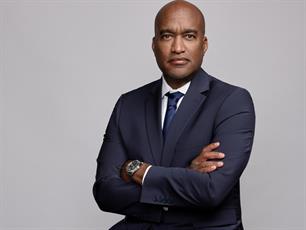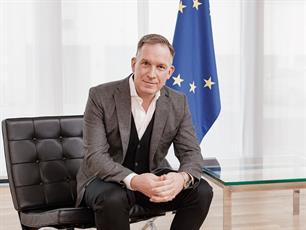Holmes Report 09 May 2011 // 11:00PM GMT
Chuck Sibley, manager of the Navistar engine plant in Huntsville, Ala., was staring the economic downturn in the face. For several months, his assembly line would lie largely idle. But every fiber of his being resisted laying off his highly trained employees and the human cost it would entail—as well as the cost of hiring and training others, when the economy came back. Chuck then had a great idea: Instead of laying off the employees, why not pay them to conduct volunteer work in the community, until times improved and they could resume their regular work? Navistar management agreed to try a pilot program, and the communications team believed that investors, customers, employees and the community would view the program as a smart business move. The team documented the employees’ activities and impact, and shared video footage, photos and employee interviews with local and national media. Beyond receiving coverage on ABC News, CNN and People Magazine, Chuck Sibley was then voted a “Hero of the Year” by People, winning a cash award which Navistar matched and donated to the social service agencies.
The Opportunity
The communications team believed that if properly publicized, Chuck’s pilot program would inspire employees, build even stronger ties to the Huntsville community, and demonstrate to customers and investors that Navistar encouraged innovative approaches for retaining skilled employees.
Objectives, Research and Planning
Management challenged the communications team to secure at least one significant story in a national media outlet that would be credible to Navistar’s customers and investors. In addition, the team set a goal of securing coverage in each of the Huntsville, Ala., broadcast media outlets, as well as the Huntsville Times.
To determine whether the media would find this story newsworthy, the communications team researched past volunteer programs and determined that Chuck’s approach was essentially unprecedented. While other companies had held “volunteer days” during which their employees focused on community outreach efforts, no prior program had lasted for three months, as this one did. The team also audited other stakeholder-focused teams to ensure that the communications effort would address any potential concerns:
• Employees needed to understand that this approach was a pilot program, and would not necessarily be tried at all locations company-wide. This was especially critical for the labor relations team, which was preparing for negotiations with the UAW.
• Communicators worked with the company’s government relations team to assure that the company’s community outreach was clearly positioned as a pilot program.
• The team worked with the company’s investor relations team to assure that their stakeholders would understand the value of retaining 50 versatile, highly trained employees.
• The team also met with the community organizations selected as partners for the program—Habitat for Humanity, the Salvation Army and Care Assurance System for the Aging and Homebound (CASA)—all of whom agreed to participate in media coverage.
Strategic Approach
The communications team worked closely with Chuck Sibley and his local Human Resources staff to capture the story as it happened, then package it in a way that would make it easy for the media to cover, while clearly conveying the business benefits. The team captured extensive photos and B-roll to go along with the news release and employee interviews, and also quantified results, including the jobs saved and the benefits delivered to the community (new and renovated houses, wheelchair ramps, improved fundraising).
Execution
At the start, only one wave of publicity was planned:
• A news release, including a link to online B-roll, was issued to targeted national, local and trade outlets.
• Agency partner StrataComm followed up with outreach to select consumer media where they had existing relationships, reinforcing the pioneering nature of the program and its newsworthy nature.
• The team carefully sequenced media follow-up to carefully manage demand for “exclusives” from each major category of media—local news programs, national print, broadcast news and cable news—and to properly sequence Chuck Sibley’s interviews with each category.
The campaign entered a new phase when People magazine notified Navistar that Chuck Sibley had been nominated as a “Hero of the Year.” Readers would vote online, with each ultimate winner receiving an award of $10,000 for a charity of his or her choice. To raise visibility for this charitable opportunity, Navistar created a new “Chuck the Vote” campaign. It combined a wide array of low-cost outreach efforts—including publicity, events and social media—to generate support for Chuck’s candidacy. Navistar also agreed to match any winnings for the partner social service agencies. Tactics for this Phase 2 included:
• A “Chuck’s My Hero” SharePoint site, with postings instructing employees on how to vote and get the word out.
• T-shirts, buttons and banners were also used to get out the vote.
• A special “Chuck’s My Hero” employee event, where PCs were set up to allow for easy voting.
• A special event at the Navistar Open, an LPGA event sponsored by Navistar in the Huntsville area, where guests and professional golfers were provided with iPads for easy voting.
• A “Chuck the Vote” page on Facebook, where Navistar teamed up with the charities to mobilize the community to vote for Chuck, drafting sample emails and encouraging volunteers to pass the word.
Summary of Results
The story was enthusiastically received by the American public, inspired by a boss who was taking a longer-term view of the economy and how to run a business. In the first two months, media coverage included:
• People Magazine, with 43 million subscribers
• ABC “World News Tonight,” with 9 million viewers
• CNN “American Morning,” with 365,000 viewers
• 10 radio networks, including Fox News, CBS Marketwatch and Wall Street Journal Report, with 10.7 million listeners
• Extensive coverage in Huntsville and Detroit, home of many Navistar automotive-market customers
• Ongoing interview requests from Women’s World, Parade magazine and other publications.
The team calculated that the cost of equivalent advertising paid for this initial time/space would be $929,400, compared with the approximately $30,000 cost of its work with StrataComm.
Results of Phase 2
This “Chuck the Vote” campaign was tremendously successful in spreading the word cost-effectively.
• Using Facebook’s online technology, Navistar was able to track clear upticks in impressions. More than 1,300 impressions were generated by one post, and 155 “Like” comments added to the viral impact.
• Chuck was named a “Hero of the Year” by People magazine. His $10,000 prize was split among the three charities and Navistar provided a $10,000 matching gift, for a total donation of $20,000.
• Due to a nomination submitted directly by Navistar, the company was named a winner of the U.S. Chamber of Commerce’s 2010 U.S. Community Service Award for its pilot program, leading to additional press coverage.
• Chuck Sibley was named Grand Marshal of the Huntsville holiday parade in December 2010.
Business Benefits
Beyond stronger ties to the community, the campaign generated strong positive reactions from customers, investors and the general public. Navistar received unsolicited feedback from people across the nation. A federal agency wrote to express interest in Navistar products. Many individuals wrote to say that while they might not be able to buy Navistar’s products, they intended to buy its stock. Representative comments:
• A company dealer wrote, “After watching the ABC News coverage of your amazing ‘people’ contribution to non-profits in Huntsville, my chest swelled with pride that I sell International Trucks. What a great idea and what a wonderful corporate decision.”
• A prospective investor wrote, “I’ve rarely been moved by the actions of a public corporation as I was by the actions of Navistar …Since I don’t buy your products, I will most certainly buy your stock.”
• Another investor wrote, “Thank you for your positive actions during very challenging times. Although I cannot directly support your company by purchasing your products, I intend to support you by purchasing Navistar stock instead. It’s one small thing I can do to show my support of a corporation that understands its place in America and walks the walk.”
• One ordinary American wrote in to say, “This is an example of what industry can do to solve the problems of many less fortunate Americans. Your company will be long remembered for what it has done for its community.”
• Another wrote, “What your company is doing for your employees and your community makes me proud to be an American.”


































.jpg)

















